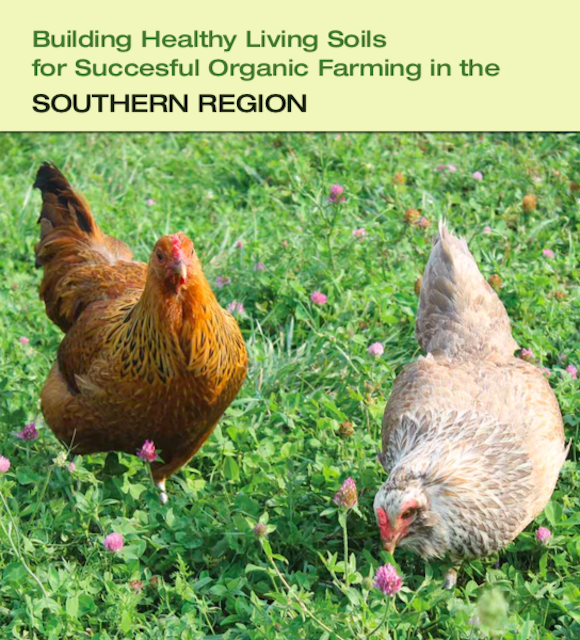 March 30, 2021 – Healthy, living soils provide the foundation for successful and profitable organic farming and ranching. In the South, organic producers face intense pressure from weeds, insect pests, parasitic nematodes, and plant-pathogens; summer heat extremes, drought, and flood; and soil types with inherent fertility limitations. In addition, long growing seasons can make it harder to rebuild soil organic matter, especially during intensive crop production.
March 30, 2021 – Healthy, living soils provide the foundation for successful and profitable organic farming and ranching. In the South, organic producers face intense pressure from weeds, insect pests, parasitic nematodes, and plant-pathogens; summer heat extremes, drought, and flood; and soil types with inherent fertility limitations. In addition, long growing seasons can make it harder to rebuild soil organic matter, especially during intensive crop production.
In OFRF’s 2015 nationwide survey of organic producers, 79% of respondents from the South cited soil health as a high research priority, somewhat higher than the national average of 74% (Jerkins and Ory, 2016). Many respondents expressed a need for practical information on how to build soil health in hot climates that burn up soil organic matter (SOM) and promote aggressive weed growth. The goal of this new guidebook is to help the region’s current and aspiring organic producers develop effective, site-specific soil health management strategies that support successful, resilient enterprises.
Building Healthy Living Soils for Successful Organic Farming in the Southern Region explores how to apply organic soil health principles to the region’s soils through a series of practical steps and strategies, illustrated by innovative farmer stories and brief descriptions of underlying scientific concepts. The guidebook also includes a list of resources for additional reading, a description of the inherent properties of soil types commonly found in the South, and a summary of the latest soil health research being conducted in this region.
This latest guidebook builds on OFRF’s popular series of guidebooks and webinars focused on organic farming and soil health. The entire series is available to download for free.


